Welding Machines are essential tools in various industries, facilitating the permanent joining of metals through the application of heat and pressure. They play a crucial role in construction, manufacturing, automotive, aerospace, and many other sectors. To comprehend the nuances and capabilities of welding machines, one must first understand the significance of their power sources and the advancements in their technology.
I. Understanding Different Power Sources in Welding Machines
A. Alternating Current (AC) Welding Machines
Explanation of AC Power Source:
- AC power is characterized by its alternating voltage and current flow, which regularly reverses direction.
- In welding machines, AC power is supplied from the main electrical grid or generator, and it is then converted to the appropriate welding voltage and current.
Applications and Best Uses:
- AC welding machines are commonly used for welding thicker materials, especially metals like aluminum and magnesium.
- They are suitable for heavy-duty welding tasks in industries like construction, shipbuilding, and automotive.
Advantages and Limitations:
- Advantages:
- Good penetration capabilities, making them effective for thicker metal sections.
- Can handle different types of welding rods, including both acidic and basic electrodes.
- Limitations:
- Less suitable for welding thin materials due to potential heat distortion.
- Tends to produce more spatter compared to DC welding.
B. Direct Current (DC) Welding Machines
Explanation of DC Power Source:
- DC power flows in a single direction, providing a consistent polarity for the welding process.
- Welding machines convert AC power to DC, resulting in continuous and smoother welding output.
Applications and Best Uses:
- DC welding machines are versatile and widely used for both thin and thick metal welding.
- They are commonly utilized in construction, fabrication, maintenance, and repair applications.
Advantages and Limitations:
Advantages:
- Offers better control of the welding process and reduces the risk of arc blow.
- Suitable for various welding techniques, including TIG, MIG, and Stick welding.
Limitations:
- May not be as effective as AC for welding certain materials like aluminum.
- Typically more expensive than AC welding machines.
C. Inverter Welding Machines
Explanation of Inverter Technology:
- Inverter welding machines use advanced semiconductor components to convert input power to high-frequency AC and then rectify it to DC.
- The high-frequency conversion allows for a more compact and lightweight design.
How Inverter Welding Machines Work:
Inverter technology enables precise control over the welding output, allowing for adjustable arc characteristics and better performance.
Advantages and Suitability for Various Welding Applications:
Advantages:
- Highly portable and lightweight, suitable for on-site and remote welding tasks.
- Energy-efficient, reducing power consumption and operating costs.
Suitability for Various Welding Applications:
Inverter welding machines can handle a wide range of materials and welding processes, making them versatile and adaptable.
II. Advancements in Welding Machine Technology for Improved Efficiency
A. Introduction to Technological Advancements
Welding machines have witnessed significant technological advancements in recent years, leading to enhanced efficiency and productivity in welding processes.
These advancements have been driven by the need for more precise and reliable welding techniques across various industries.
B. Pulse Welding Technology
How Pulse Welding Works
- Pulse welding is a process that alternates between high and low current levels during welding.
- The power source generates pulses of current, with the high-current phase melting the metal, and the low-current phase allowing it to solidify.
- This pulsing action results in controlled heat input and reduces the risk of overheating the material.
Benefits of Pulse Welding
- Improved Weld Quality: Pulse welding reduces the chances of weld defects such as burn-through and distortion.
- Lower Heat Input: The controlled heat input minimizes the heat-affected zone (HAZ), preserving material properties.
- Thin Material Welding: Pulse welding enables precise control for welding thin materials without burning through.
Industries Benefiting from Pulse Welding
- Automotive: Pulse welding is used in automotive manufacturing for precise and aesthetically appealing welds.
- Aerospace: The aerospace industry benefits from pulse welding's ability to join thin and delicate materials.
- Electronics: Pulse welding is employed in electronics manufacturing to create reliable connections.
C. Digital Control Systems
Integration of Digital Controls in Welding Machines
- Modern welding machines incorporate digital control systems for enhanced performance and flexibility.
- Digital controls allow welders to adjust welding parameters precisely, such as voltage, current, and travel speed.
Precision and Customization
- Digital controls enable fine-tuning of welding parameters, resulting in precise and consistent welds.
- Welders can store and recall specific settings, making it easier to switch between different welding tasks.
Impact on Weld Quality and Productivity
- Improved Consistency: Digital controls ensure that each weld is executed with the same settings, reducing variations.
- Time Savings: Faster parameter adjustments and reduced setup time lead to increased overall productivity.
D. Lightweight and Portable Designs
Importance of Portability in Modern Welding Machines
- In various industries, welding tasks often need to be carried out in different locations, necessitating portable equipment.
- Portable welding machines offer flexibility and ease of transportation between job sites.
Materials and Engineering Innovations
- Advances in materials and engineering have allowed manufacturers to create lightweight yet durable welding machines.
- Innovative cooling systems and compact designs contribute to the reduction in overall weight.
Advantages and Trade-Offs
- Enhanced Maneuverability: Lightweight designs make it easier for welders to access tight or elevated spaces.
- Reduced Power Output: Some portable machines might have lower power output compared to larger stationary models.
Versatility: Portable welding machines can handle a wide range of materials and welding processes.
III. Exploring Hybrid and Multi-Process Welding Machines
A. Definition of Hybrid and Multi-Process Welding Machines:
- Hybrid welding machines: Welding equipment that combines two or more distinct welding processes in a single unit.
- Multi-process welding machines: Welding equipment capable of performing various welding techniques without changing the setup.
B. Versatility and Adaptability:
Combining Different Welding Processes:
- Hybrid and multi-process machines offer the ability to switch between welding processes (e.g., MIG, TIG, Stick) seamlessly.
- Users can choose the appropriate welding technique based on the specific requirements of the welding task.
- This versatility eliminates the need for multiple standalone machines, saving space and costs.
Use Cases in Industrial Settings:
Heavy fabrication industries: Hybrid and multi-process welding machines find applications in shipbuilding, construction, and metal fabrication.
Repair and maintenance: Ideal for addressing diverse repair jobs that require different welding methods.
Automotive and aerospace sectors: Offers flexibility for welding various materials and components.
Considerations for Choosing the Right Machine:
- Workload and demand: Analyze the frequency and variety of welding tasks to determine if a hybrid or multi-process machine is suitable.
- Skill level of operators: Consider the expertise of welding operators in handling different processes.
- Budget and investment: Compare the initial cost of the machine with the long-term benefits of versatility and productivity.
C. Performance and Productivity:
Comparing Performance with Single-Process Machines:
- Hybrid and multi-process machines deliver comparable performance to dedicated single-process machines.
- Weld quality and strength are on par with standalone units, ensuring reliable and durable welds.
- Advanced models even provide enhanced performance in certain applications.
Factors Affecting Productivity:
- Changeover time: Minimizing the time required to switch between welding processes is crucial for overall efficiency.
- Ease of use: User-friendly interfaces and controls contribute to increased productivity and reduced downtime.
- Welding speed and deposition rates: Understanding the machine's capabilities helps optimize productivity.
Cost-Effectiveness Analysis:
- Initial investment vs. long-term savings: Assess the cost-effectiveness of investing in a hybrid or multi-process machine over buying separate units.
- Maintenance and consumables: Consider the combined costs of maintaining a single machine versus multiple machines.
- Training and skill development: Evaluate the training required for operators to utilize all available welding processes effectively.
IV. Smart Welding Machines with Integrated Control Systems
A. Introduction to Smart Welding Machines:
Smart welding machines refer to technologically advanced welding equipment that incorporates integrated control systems, enabling automation and data-driven functionalities.
These machines utilize cutting-edge technologies like the Internet of Things (IoT) and Artificial Intelligence (AI) to enhance efficiency, productivity, and safety in welding processes.
B. Internet of Things (IoT) Integration:
- Real-time Monitoring and Data Collection:
Smart welding machines are equipped with sensors that continuously monitor various parameters during the welding process.
Data on welding current, voltage, temperature, and other relevant variables are collected in real-time, providing valuable insights.
- Remote Control and Accessibility:
IoT-enabled welding machines can be remotely controlled and monitored using connected devices like smartphones or computers.
Welders and supervisors can access machine status, adjust settings, and receive alerts, even when not physically present near the machine.
- Enhanced Safety Features:
IoT integration allows smart welding machines to implement advanced safety protocols.
Automatic shutdown in case of anomalies, monitoring of operator safety gear, and real-time hazard detection are some safety enhancements.
C. Artificial Intelligence (AI) Applications:
- Predictive Maintenance:
AI algorithms analyze the data collected by smart welding machines to predict maintenance requirements.
By identifying potential issues in advance, maintenance can be scheduled proactively, reducing downtime and preventing costly breakdowns.
- Welding Process Optimization:
AI-powered welding machines can optimize welding parameters based on material, joint type, and desired weld quality.
Continuous adaptation and learning from past welds lead to improved performance and consistent results.
Quality Control and Defect Detection:
- AI algorithms can detect defects, irregularities, and deviations in weld quality by comparing real-time data with established quality standards.
Automatic rejection of substandard welds ensures high-quality output and reduces the need for manual inspection.
V. Energy-Efficient Welding Machines and Environmental Benefits
A. Importance of Energy Efficiency in Welding Machines
- Energy efficiency is a crucial factor in modern welding machines.
- Reduces overall energy consumption, leading to cost savings and environmental benefits.
- Ensures sustainable operations and aligns with green initiatives.
B. Energy-Saving Technologies
- Power Management Systems
- Regulate the energy output based on the welding requirements.
- Optimize power distribution to minimize energy wastage during low-demand periods.
- Improves the efficiency of the welding process without compromising performance.
- Energy Recovery Systems
- Capture and utilize excess energy generated during welding operations.
- Re-purpose the energy for other welding processes or auxiliary systems.
- Enhances overall energy utilization and reduces energy losses.
- Standby Modes and Auto-Idle Features
- Automatic standby modes activate during welding inactivity, reducing energy consumption.
- Auto-idle features adjust the machine's power output when not in use.
- Ensures energy conservation and prolongs the machine's lifespan.
C. Environmental Impact and Sustainability
- Reduction in Carbon Footprint
- Energy-efficient welding machines minimize greenhouse gas emissions.
- Lower energy consumption results in reduced carbon dioxide (CO2) output.
- Contributes to mitigating climate change and global warming.
- Compliance with Environmental Standards
- Energy-efficient welding machines often meet or exceed environmental regulations.
- Complying with standards ensures responsible manufacturing and usage practices.
- Supports eco-friendly initiatives and corporate social responsibility.
- Economic Benefits of Green Initiatives
- Energy efficiency translates to reduced operating costs for welding businesses.
- Lower energy bills lead to increased profitability and competitiveness.
- Demonstrates commitment to sustainability, attracting environmentally conscious customers
In conclusion, welding machines stand as indispensable tools across a multitude of industries, facilitating the permanent bonding of metals through the application of heat and pressure. The intricate web of power sources, including AC, DC, and inverter systems, underscores their versatility in accommodating diverse welding tasks. Technological leaps in welding machine advancements, such as pulse welding technology and digital control systems, have revolutionized efficiency and precision in welding processes. The advent of lightweight, portable designs and the emergence of hybrid and multi-process machines address the need for flexibility and adaptability in ever-evolving industrial landscapes. Moreover, the integration of smart technology, encompassing IoT and AI, ushers in an era of automation, data-driven insights, and enhanced safety. Concurrently, the paradigm shift towards energy-efficient welding machines signifies a commitment to both economic and environmental sustainability. As industries continue to evolve, welding machines remain pivotal in shaping innovation, progress, and responsible resource utilization.


-160x160-state_article-rel-cat.jpg)







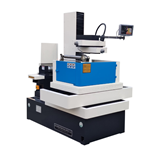
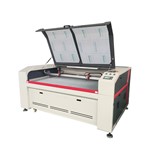

-160x160-state_article-rel-cat.png)
-160x160-state_article-rel-cat.png)
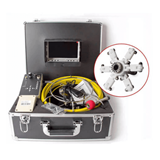
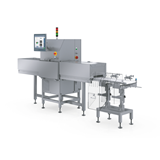



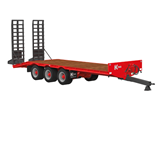


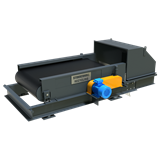

-160x160-state_article-rel-cat.png)
-205x205.png)

-205x205.png)

